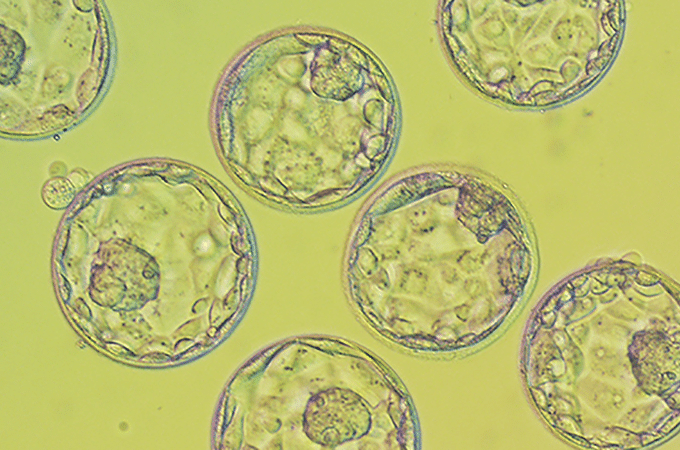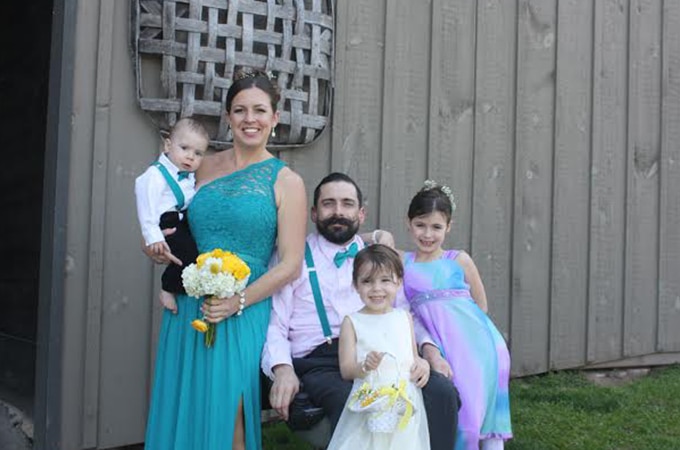In recent years, the success with a frozen embryo transfer (FET) has increased substantially making it an increasingly popular option to consider before moving to another fresh in vitro fertilization (IVF) cycle. With frozen embryo transfers, you can extend the chance of pregnancy per egg retrieval—ultimately saving you time and money if you happen to need multiple cycles to achieve pregnancy.
Dr. Anish Shah , who sees patients out of SGF’s Richmond – Stony Point and Richmond – Henrico Doctors’ – Forest locations, answers frequently asked questions about frozen embryo transfers.
What is a frozen embryo transfer (FET)? A frozen embryo transfer (FET) is a cycle in which the frozen embryos from a previous fresh IVF or donor egg cycle are thawed and then transferred back into the woman’s uterus.
In 2015, nearly half of all fresh IVF cycles going to transfer at Shady Grove Fertility resulted in high quality day five or six blastocyst-stage embryos available for freezing. The chance of having embryos available to freeze greatly depends on age. For example, over 60 percent of cycles in which the woman was 35 years old or younger had embryos available to freeze, while less than 20 percent of women over the age of 40 had blastocyst-stage embryos available to freeze.
When can I do an FET cycle? Frozen embryos remain viable well over 10 years or more after the initial freeze. You may choose to do an FET cycle following an unsuccessful fresh IVF cycle, as your initial transfer after freezing all of your embryos or you are returning after a successful fresh IVF cycle ready to expand your family.
VIDEO
What are the success rates for frozen embryo transfers? The success rates of an FET cycle are at least comparable to fresh IVF cycles—and can often result in a higher success rate because of the opportunity to optimize the lining of the uterus before implantation, among other reasons. Both fresh and frozen cycles have the same primary indicator for success: the maternal age at the time of embryo freezing. Many patients wait several years between the initial freeze of their embryos and attempting a subsequent FET cycle. Any patient, no matter the amount of time between embryo freezing and thawing, can expect nearly the same potential for success as they experienced with the fresh IVF cycle that the frozen embryos came from.
Women 35 years and younger have over a 60 percent chance of pregnancy per transfer. This rate declines as the maternal age at the time of the freeze increases.
What is the cost of embryo cryopreservation and storage? For patients enrolled in our Shared Risk 100% Refund Program and Multi-Cycle Discount Program for IVF, the embryo cryopreservation and storage fees are included with your contract. The Shared Risk 100% Refund Program covers embryo storage fees throughout the term of the contract. In the Multi-Cycle Discount Program, the first year of embryo storage is included in the program fee.
For patients paying the IVF global fees for treatment, the initial embryo cryopreservation and storage fees for the first year are due at the time of service, totaling $1,800.
Patients returning to use a frozen embryo may have one or more options:
Shared Risk 100% Refund Program for Frozen Embryo Transfer With the Shared Risk 100% Refund Program for Frozen Embryo Transfer (FET), patients pay a flat fee for up to 6 FET cycles, for as many frozen embryos as that patient may have available at the time they enter the program. Similar to our traditional Shared Risk 100% Refund Program, you either take home a baby or receive a full refund. Fees for medication may be applicable. (some exclusions apply) Fee-for-service (global fee) Shady Grove Fertility offers FET cycles at a global fee of $4,600 which includes the cost of monitoring, embryology fees, embryo thaw, transfer, and your first pregnancy test. Additional pregnancy care (blood work, ultrasounds and office visits) while at Shady Grove Fertility are typically covered by insurance. Fees for medication may be applicable and usually range from $400-$800.The combination of reduced cost and equal success rates make frozen embryo transfers an exciting option. What are the benefits of frozen embryo transfers over a fresh (stimulated) cycle? In addition to the lower cost, benefits to a FET cycle include:
Less Medication
Instead of stimulation medication, patients use estrogen and progesterone to thicken the lining of their uterus in preparation for the embryo transfer to allow implantation. Since the stimulation phase was done in a prior cycle, there is also no egg retrieval requiring anesthesia.
Less Stress
FET cycles are often less stressful than fresh cycles because factors like stimulation response, egg development, and embryo growth were considered during the fresh cycle. Shady Grove Fertility only freezes high quality blastocyst-stage embryos giving patients a significant chance of success with an FET cycle.Cycles are also more predictable with fewer cycle cancellations. Patients may select the day of their transfer months in advance, which will then be used to determine their cycle initiation date.
What would I expect when starting a frozen cycle? VIDEO
If you’re ready to proceed with a frozen embryo transfer, contact your local Shady Grove Fertility office and set up an appointment with your physician and nurse to discuss a potential FET cycle. During this time, we will review with you your records to ensure the necessary medical testing and screening is current.
At cycle baseline, you’ll be instructed to begin a sequence of about 14 to 22 days of estrogen pills to build the uterine lining. At ‘lining check,’ upon demonstration of a thickened endometrium lining, you’ll be given instructions to begin progesterone, in addition to continuing estrogen, for usually 6 days prior to transfer. The morning of the transfer our team of embryologists will thaw the embryo(s) for transfer, a short time later the patient will arrive and the transfer, very similar to what you experience with the fresh cycle, will occur.
Estrogen and progesterone are continued through the blood pregnancy test and is concluded on the 10th week of gestation. The medication helps to continue to thicken the uterine lining until the placenta can take over.
More questions about frozen embryo transfers? As success rates continue to climb for frozen embryo transfers, more and more patients will find themselves choosing this treatment option. Read two of our patient success stories with FETs.
Editor’s Note : This post has been updated for accuracy and comprehensiveness as of September 2020.
To schedule a virtual consultation with an SGF physician, please call our New Patient Center at 1-888-761-1967 or submit this brief form .





